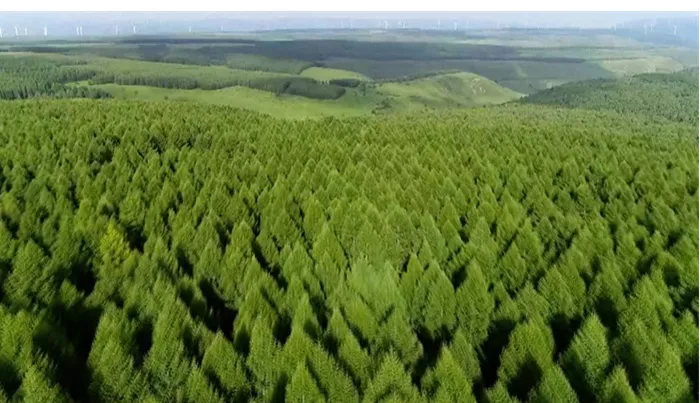Nation’s Largest Ecological Project Enters Critical Implementation Stage
China has mobilized a new decade-long campaign to strengthen its massive “Three-North” Shelterbelt Program, marking the sixth phase of what has become the world’s largest ecological restoration initiative since its 1978 launch. The program covers 13 northern provinces across 4.07 million square kilometers – representing 42% of China’s total land area.
Strategic Background and Program Evolution
Initiated when forest coverage stood at just 5.05% in northern regions, the program has achieved 31.74 million hectares of afforestation over four decades, increasing forest coverage to 13.84%. The current phase (2021-2030) focuses on three key battles:
- The Yellow River “Ji-shaped Bend” Campaign
- The Horqin and Hunshandak Sands Elimination Campaign
- The Hexi Corridor-Taklimakan Desert Edge Blockade Campaign
Mechanization Revolutionizes Desert Control
Technological innovation has transformed traditional sand fixation methods, with mechanization now accounting for nearly 50% of afforestation work. Advanced equipment demonstrates remarkable efficiency gains:
| Technology | Efficiency Gain | Cost Reduction |
|---|---|---|
| Spiral Drilling Planters | 10x faster than manual | 40% overall |
| Self-propelled Straw Barrier Layers | 20x daily output | 33% per acre |
The “Forest Machinery Cloud” monitoring system, utilizing BeiDou navigation and IoT technology, now manages equipment deployment across vast treatment areas.
Economic Transformation Through Ecological Restoration
The program has catalyzed sustainable industries in previously impoverished regions:
Notable Success Stories
Inner Mongolia: Cistanche deserticola cultivation generates 1.5 billion yuan annually while stabilizing dunes. Participating farmers receive 100-200 yuan per mu subsidies.
Xinjiang: 214,000 mu of cistanche plantations yield 40,000 tons annually worth 400 million yuan, with products exported globally.
Ningxia: Wolfberry industry spans 325,000 mu with 29 billion yuan output value. Zhongning County’s brand alone exceeds 20 billion yuan valuation.
Inner Mongolia’s Pioneering Models
As the frontline battleground containing 20% of China’s desertified land, Inner Mongolia has developed innovative approaches:
- Kubuqi Model: Public-private partnership has greened 6,000 sq km of desert since 2012, generating 2.46 billion yuan from eco-tourism
- Desert Highway System: 26 new sand-crossing roads (450 km total) enable deep-desert treatment of 858,000 mu
- PV-Sand Control: 27.27 GW renewable energy capacity integrated with 2.38 million mu desert treatment in 2024
The region completed 24.42 million mu of afforestation in 2024 – 45.8% of China’s total – while forestry industry output surpassed 100 billion yuan.
Future Challenges
Program leaders identify remaining obstacles including water resource constraints (only 1.92% of national total), equipment limitations in extreme terrain, and maintaining treatment quality across expanding project areas.
With 577 billion yuan in central investment since 2023 supporting 369 projects across 100 million mu, China continues mobilizing its “Green Great Wall” initiative to transform northern ecosystems while creating sustainable economic opportunities.
Related topics:

